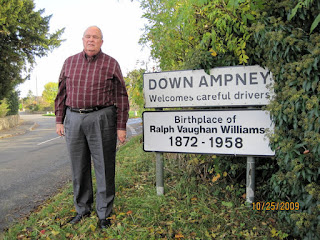The Sixth Sunday of Easter May 17, 2020 Trinity Cathedral Choir member John Williamson at Down Ampney Come down, O Love divine, seek thou this soul of mine, and visit it with thine own ardor glowing; O Comforter, draw near, within my heart appear, and kindle it, thy holy flame bestowing . This beloved hymn was written by Bianco da Siena (c. 1367-1434), an Italian mystic poet. Very little is known of his life, but several of his hymns survive in English translations. The translation by 19th century poet Richard Frederick Littledale in The Hymnal 1982 is an example of the Romantic era's fascination with the Middle Ages. A priest and prolific author, Littledale is best known for this classic hymn. The tune was composed by the 20th century British composer, Ralph Vaughan Williams (1872-1958). It is named for Vaughan Williams' birthplace and was composed specifically for this text. The Hymnal 1982 Companion notes: "It has a very satisfying rhythmical st...






